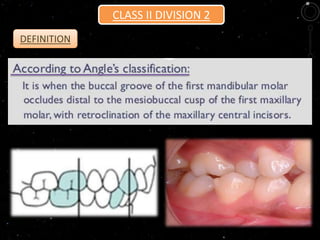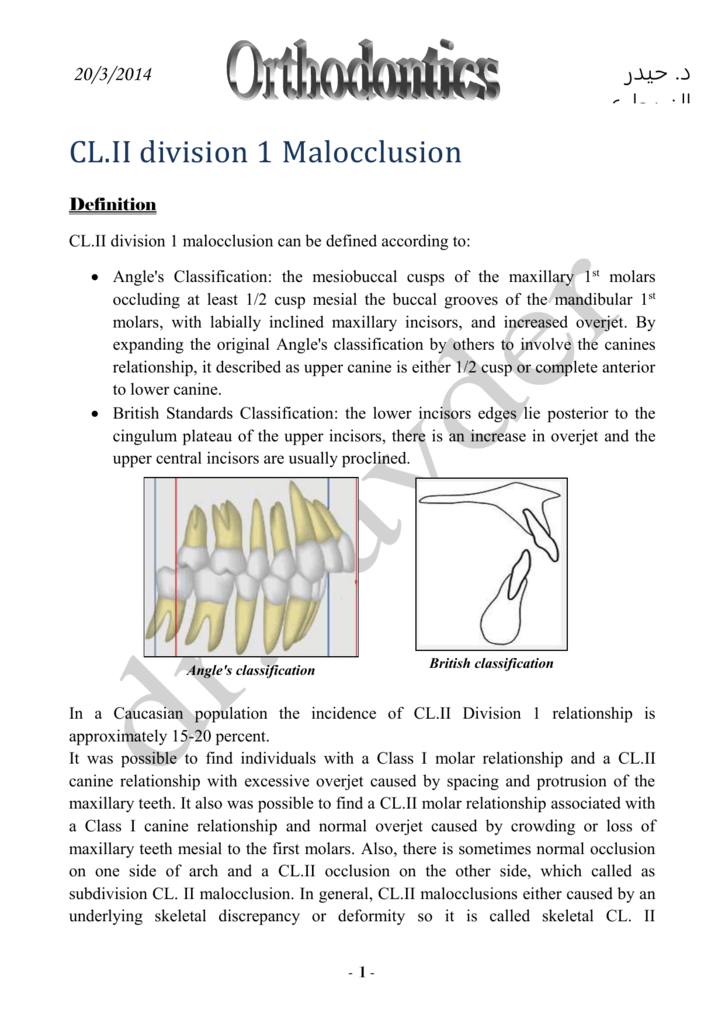class ii malocclusion definition
Although these components will be discussed separately it needs to be emphasized that they are often expressed at the same time and to various degrees. People with this underbite often have a chin that appears too pronounced.

What Is A Class 2 Malocclusion Dental Information
The mesiobuccal cusp of the maxillary first molar occluding anterior to the buccal groove of the mandibular first molar ie.

. Class II subdivision malocclusions were grouped into 3 main categories. CLASS II DIVISION 2 According to British Standards classification. Malocclusion Angle class II subdivision Definition A distal placement of the mandibular molar a mesial relationship of the maxillary or a combination of the two.
Class 2 or class II malocclusions are characterized by upper molars that are too far forward compared to the lower molars. The largest category was mandibular asymmetry. A Class 2 molar relationship is described as.
A class II intermaxillary dental relationship represents a posterior discrepancy of the lower teeth with regard to the upper teeth. This problem can create a jutting jaw and jutting lower front teeth causing a cross bite of the lower and upper teeth. Jaw lengths are normal but one or more teeth are in an abnormal position Photo 4Examples include lance canine rostral crossbite caudal crossbite and level bite.
Types of class 2 malocclusion Class 2 malocclusions can be subdivided into two categories division 1 and division 2. There are two subtypes of Class II malocclusion. Both approaches require anchorage and for both implants may be useful.
Etiology of Class II division 2 Class II division 2 malocclusions arise from a number of interrelated dental skeletal soft tissue and genetic factors. A deep bite also known as a Type II Malocclusion is a condition in which the upper teeth overlap the lower teeth which can result in hard and soft tissue trauma in addition to an effect on appearance. Class III malocclusion is where the lower molars are far forward and dont fit in with the corresponding upper molars.
This overbite can be caused by an overly prominent upper jaw or an underdeveloped lower jaw. Class 1 Malocclusion Neutrocclusion This is the most common type of malocclusion in which the upper teeth overlap the lower teeth. Class II division 2.
The mesiobuccal cusp of the upper first molar occludes anterior to the buccal groove of the lower first molar. Neutroclusion Class 1 malocclusion. The bite however is normal.
In this type of malocclusion your upper teeth and jaw significantly overlap with your lower teeth and jaw. Class 2 Class 2 malocclusion is diagnosed when you have a severe overbite. The embrasure between the lower canine and the lower first premolar is shifted backward with regard to the upper canine blue arrows.
The upper central incisors are retroclined because of high lower lip line. The word malocclusion literally means bad bite The condition may also be referred to as an irregular bite crossbite or overbite. Class II malocclusion.
Interesting trends were noted with regard to treatment strategies midline and molar corrections and mandibular incisor proclination. Most of class II2 malocclusions are caused by an underlying skeletal discrepancy and few have a normal skeletal jaw relationship. Oral and maxillofacial health professionals sometimes use the term prognathism protruding lower jaw to refer to class 3 malocclusion.
Class II malocclusion is divided into. 12 a recent study elaborated the definition as class ii division 2a for the retroclination of the upper incisor either the central or all incisors with decreased overjet and class ii division. Class II division 1.
Class II div 2 Dental or Skeletal combination of both 10. Class II division I if the incisors are proclined Class II division II if the incisors are retroclined. Description Malocclusion may be seen as crooked crowded or protruding teeth.
The American Veterinary Dental College defines Class II malocclusion as mandibular distocclusion when there is an abnormal rostro-caudal relationship between the dental arches in which the mandibular arch occludes caudal to its normal position relative to the maxillary arch. Upper incisors are tilted outwards creating significant overjet. It has been found to occur in 1520 of the US population.
Malocclusion is a problem in the way the upper and lower teeth fit together in biting or chewing. The cusp of the upper first molar rests in the groove of the lower first molar. Class 3 malocclusion called prognathism or underbite occurs when the lower jaw protrudes or juts forward causing the lower jaw and teeth to overlap the upper jaw and teeth.
The lower incisor edges lie posterior to the cingulum plateau of the upper incisors. Class II malocclusion includes those anomalies with the mesiobuccal cusp of maxillary first permanent molar occludes mesial to the mesiobuccal grove of the mandibular first permanent molar. Upper incisors are labially inclined.
However there might be spacing overcrowding under eruption or over eruption with respect to the. The maxillary first molar is inline with or anteriorly positioned relative to the mandibular first molar. Overjet is usually minimal or may be increased 11.
Symmetrical malocclusions Three classes of symmetrical malocclusions occur in dogs. Class 2 malocclusion called retrognathism or overbite occurs when the upper jaw and teeth severely overlap the bottom jaw and teeth. A Class II malocclusion is commonly corrected by either a non-extraction approach with molar distalization to establish a Class I molar relationship premolar extraction followed by space closure with potential risk for anchorage loss in the molar region.
If a class 2. Class II malocclusions are generally described as having either a dental skeletal andor functional components or characteristics. Dental Arch Characteristics of Class II Malocclusions.
Classification and treatment of Class II subdivision malocclusions. Contrary to class 2 class 3 malocclusions are characterized by lower molars that are too far forward compared to the upper molars. AETIOLOGY SKELETAL PATTERN SOFT TISSUES DENTAL FACTORS 12.
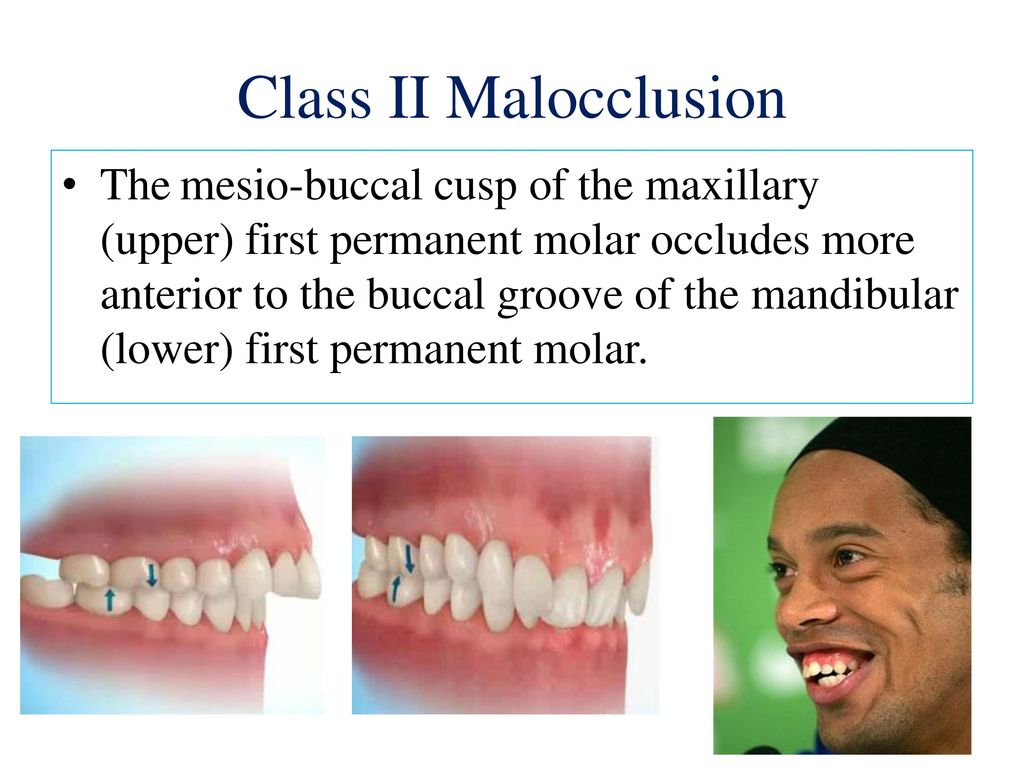
Classification Of Orthodontic Malocclusion Ppt Download
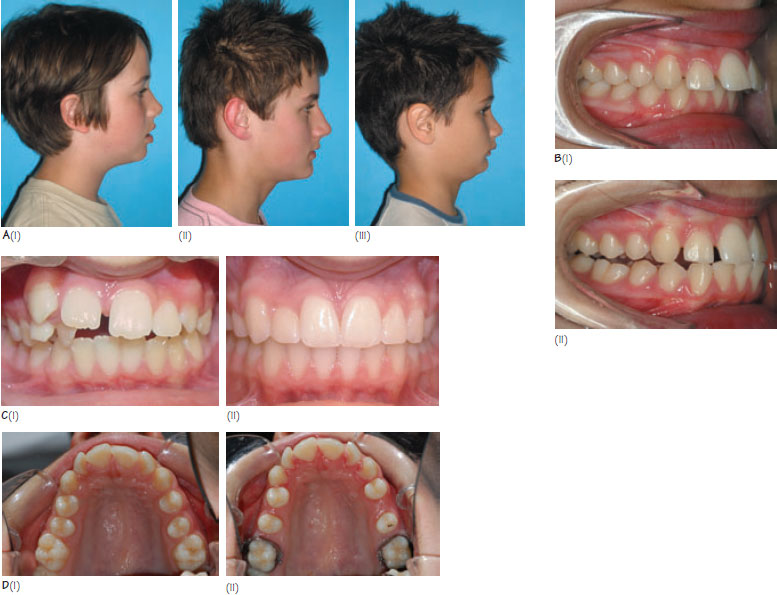
22 Class Ii Division 1 Malocclusion Pocket Dentistry
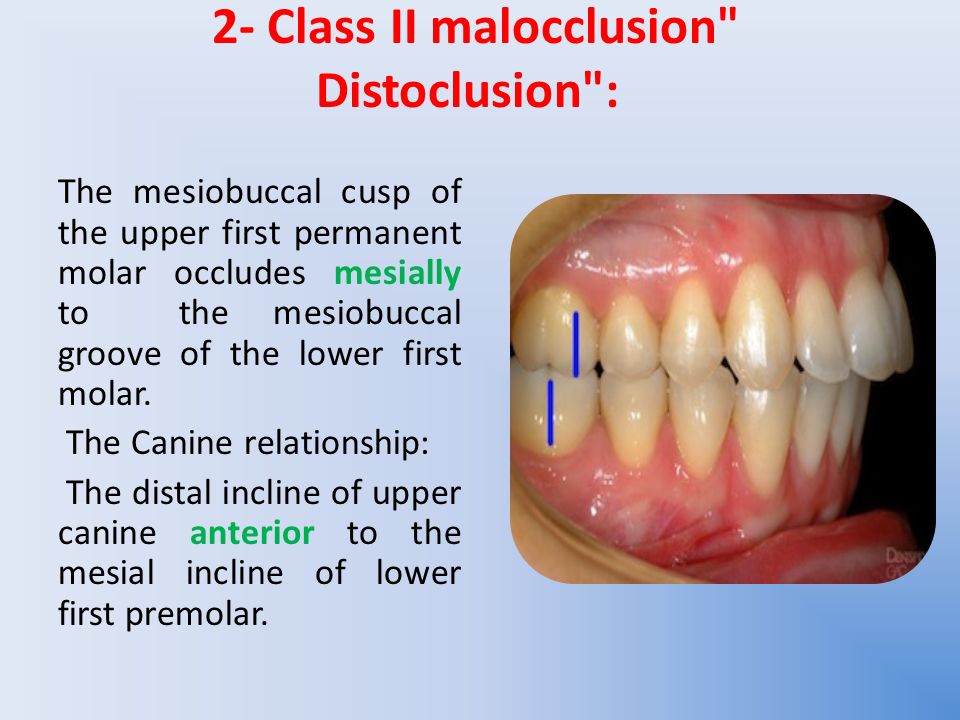
Orthodontic Dr Enas Talb 4th Class Ppt Video Online Download
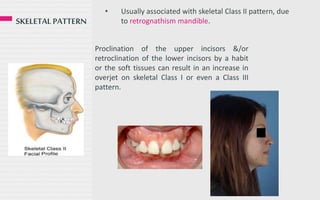
Definition Etiology And Treatment Of Class Ii Malocclusion
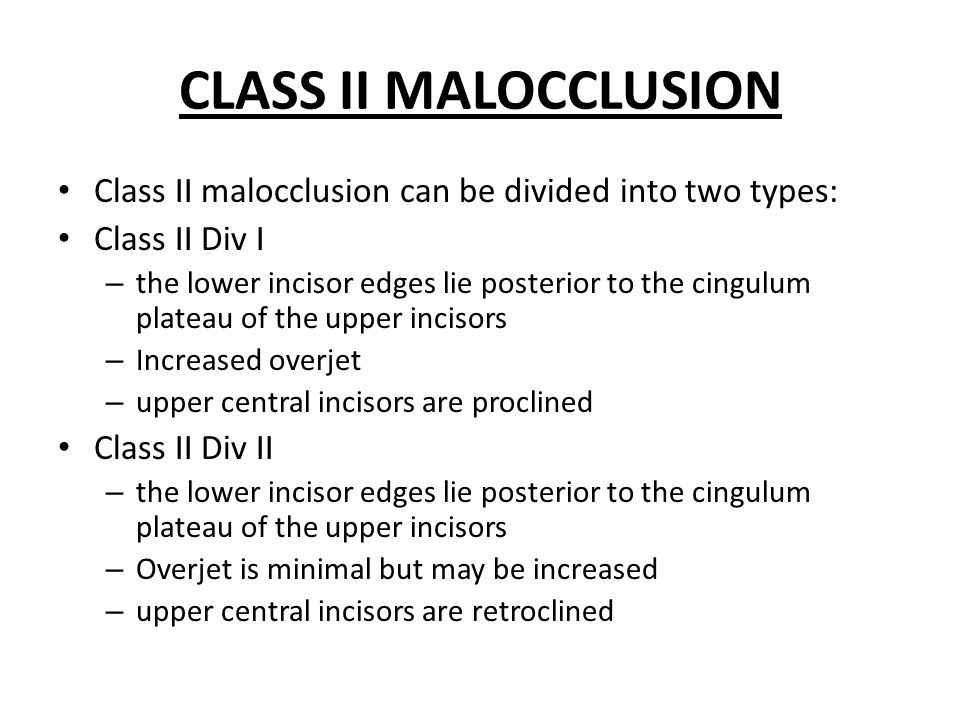
The Aetiology Of Class Ii Malocclusion Ppt Video Online Download

Advances In Management Of Class Ii Malocclusions Intechopen
Common Malocclusions Dr Jean Cassar Orthodontist

Angle S Classification For Malocclusions Dentalnotebook

Orthodontic Surgical Treatment For A Patient With Class Ii Malocclusion And Inadequate Maxillary Incisor Inclination American Journal Of Orthodontics And Dentofacial Orthopedics

Types Of Malocclusion And Correction Winchester Dental

Treatment Of Class Ii Malocclusions

Mod E Unit Ii Review Flashcards Quizlet

4 Class Ii Division 1 Malocclusion Pocket Dentistry

Definition Etiology And Treatment Of Class Ii Malocclusion

Advances In Management Of Class Ii Malocclusions Intechopen

Angle Class Ii Molar Relationship For The Malocclusion To Satisfy The Download Scientific Diagram
